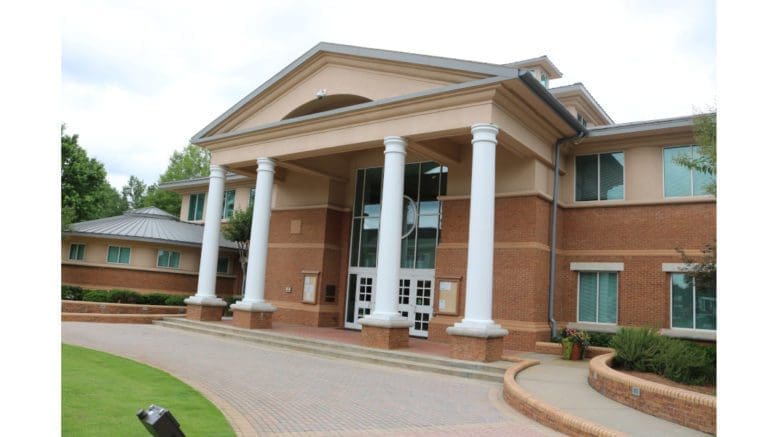By Arielle Robinson
Monday evening, Smyrna City Council adopted its millage rate and approved the installation of a red-light safety camera for traffic control at two intersections.
Monday’s meeting started 15 minutes earlier than normal. It was the third and final public hearing before the council adopted the millage rate.
The millage rate will remain at 8.99 mills, but because the rate results in an increase in taxes collected, Georgia law requires Smyrna to advertise the rate as a tax increase and hold three public hearings.
Mayor Derek Norton said the millage rate has not been raised since 1993.
“And for any homesteaded property owner here in Smyrna, your city of Smyrna tax does not go up,” Norton said. “If you use your property for rental or if there’s a commercial interest, you may see an increase, but not for any homestead exemption owner.”
City councilors adopted the millage rate 4-1, with Councilwoman Susan Wilkinson voting against the measure.
Councilmen Tim Gould and Charles Welch were absent Monday.
For more information on the millage rate, refer to the city’s announcement on its website.
City council unanimously approved the installation and maintenance of a red-light camera system for safety and traffic control at two intersections in the city — Spring Road at Cumberland Boulevard and South Cobb Drive at the East-West Connector.
The city has agreed to enter into a contract with Verra Mobility, with each camera costing $3,995 per month.
In July 2019, the Georgia General Assembly passed Georgia Code 40-14-21, which allows cities to use traffic control monitoring devices at red lights.
The monitoring devices are capable of recording images and there is a civil monetary penalty if a driver commits a traffic violation. The city’s issue sheet on the item also mentions vehicle registration and transfer of title restrictions if one does not pay the penalty.
“The intent is to create changes in driving behavior at intersections with high incidents of traffic accidents and potential hazards due to repeated violations,” City Administrator Joseph Bennett said. “From intelligence data collected at strategic intersections, first-hand accounts, and complaints from our community, it has been a long-standing concern our largest traffic intersections need increased enforcement.”
Bennett said that Smyrna police have seen innumerable speed and traffic violations that have resulted in minor accidents scaling all the way to fatal tragedies.
“In an effort to bring a greater number of drivers into compliance with the traffic control signal regulations, and to create a safer driving public, it became necessary to research technologies that are available to assist law enforcement in this endeavor,” the city administrator continued. “…[Verra Mobility] was chosen as part of the ‘HGACBUY’ cooperative purchasing agreement of which the city of Smyrna is a member. The anticipated cost for this service is zero as it will be violator funded with revenue sharing of any collections.”
Norton said the two intersections zeroed in on have the highest amount of accidents, particularly at Spring Road and Cumberland Boulevard, where many pedestrians are there near the Braves stadium.
The mayor also said the contract for the camera system is for one year. If one is cited by a police officer, the maximum fine is $70.
“The goal is to change behavior and increase safety at these intersections where we don’t have the manpower to monitor them all the time, and hopefully, at the end of the year, we’ll see that we’ve accomplished that and we can take these things down,” Norton said. “I don’t think there’s any desire amongst this council to put these things up everywhere. I think this is very much a trial to see if we’re able to change behavior and increase safety.”
Councilwoman Latonia Hines, who has experience working in traffic court, said that if one is caught violating the traffic laws at these intersections, the penalty is a civil one and is not a point-based system.
“It doesn’t go on your driving history. It doesn’t give you any points,” Hines said. “The main point of it is for the purpose of trying to stop the behavior, and if there’s one thing that we’ve noticed since the pandemic is that driving behavior has been very erratic. It’s been a lot and we need to figure some way out because we don’t have enough officers to be able to be at every intersection. So I think this is a good thing.”
Norton said that money from fines will go directly to public safety.

Arielle Robinson is a student at Kennesaw State University. She also freelances for the Atlanta-Journal Constitution and is the former president of KSU’s chapter of the Society of Professional Journalists as well as a former CNN intern. She enjoys music, reading, and live shows.

The cameras are all well and good, but how about syncing the fricking lights on Spring Rd. Some of the lights are RIDICULOUS!